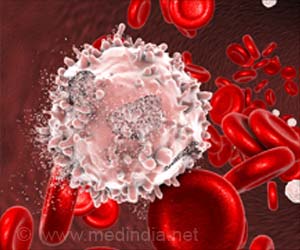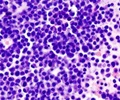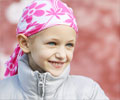Relapsed B-cell acute lymphoblastic leukemia (B-ALL): A key obstacle in reducing childhood cancer deaths.

‘Did You Know?
For children at higher risk of B-cell acute lymphoblastic leukemia (B-ALL) relapse, combining blinatumomab with chemotherapy boosted the disease-free survival rate from 85% to more than 94%. #childhoodcancer #chemotherapy #blinatumomab #leukemia #medindia ’





He began chemotherapy the next day, and the outlook was promising – disease-free survival rates for B-ALL are among the highest for pediatric cancers, at 80 to 85 percent. However, limited progress has been made over the last 15 years, and relapsed B-ALL remains a leading cause of cancer death among children. For children at higher risk of B-cell acute lymphoblastic leukemia (B-ALL) relapse, combining blinatumomab with chemotherapy boosted the disease-free survival rate from 85% to more than 94%. #childhoodcancer #chemotherapy #blinatumomab #leukemia #medindia ’
Seeking to explore all options, Santiago’s parents enrolled him in a Children’s Oncology Group clinical trial led by scientists at The Hospital for Sick Children (SickKids) and Seattle Children’s Hospital. The trial, which included over two hundred sites across four countries, combined standard chemotherapy with two cycles of blinatumomab, an immunotherapy already used for children with relapsed B-ALL.
Early study results were so promising that the trial closed early, with findings published in the New England Journal of Medicine showing a striking 61 percent reduction in the risk of B-ALL relapse or death for those who received both chemotherapy and blinatumomab (1✔ ✔Trusted Source
Blinatumomab in Standard-Risk B-Cell Acute Lymphoblastic Leukemia in Children
Go to source).
“These breakthrough data showing a significant improvement in disease-free survival are set to bring a tremendous clinical benefit to nearly all children with newly diagnosed B-ALL,” says study co-lead Dr. Sumit Gupta, Oncologist and Associate Scientist in the Child Health Evaluative Sciences program at SickKids. “This is changing the standard of care for children with B-ALL around the world.”
Reducing B-ALL Relapse and Side Effects
Before he joined the trial, Santiago received a combination therapy of steroids and chemotherapy, already personalized based on a genetic analysis of his leukemia cells showing which medications would be most effective for him.Advertisement
Unlike chemotherapy, immunotherapies like blinatumomab use the body’s own immune system to fight cancer by teaching the immune system to target cancer cells. For children like Santiago with an average risk of relapse, the study showed that after three years, the disease-free survival rate increased to 97.5 percent, compared to 90 percent with chemotherapy alone. For children with a higher risk of relapse, receiving blinatumomab in addition to chemotherapy increased the disease-free survival rate from 85 percent to over 94 percent.
Advertisement
New Era of Childhood Cancer Treatment
The findings published included 1,440 children from Canada, the U.S., Australia and New Zealand, and the results mark a significant milestone in the fight against childhood cancer. As a member of the Children’s Oncology Group, SickKids is working with more than 11,000 experts worldwide, to advance over 100 active clinical-translational trials at any given time. Of these active trials, those for children with B-ALL are being paused to introduce blinatumomab into their study designs as well.“This new combination treatment is set to become the new standard of care for these patients, potentially saving many lives and reducing the fear and health impacts associated with relapse,” says Sumit, who is also an Associate Professor at the University of Toronto. “We are now designing the next generation of studies to see whether we can safely remove some of the chemotherapy that currently makes up standard treatment, while maintaining these outstanding success rates. It’s an incredibly exciting time to be in this field as we start to try to decrease the short and long-term side effects associated with treatment.”
Nine months after his first diagnosis, Santiago is excited to finally start school in the new year, trading in his shark backpack for a backpack he chose before his diagnosis. He will continue to take a low-intensity chemotherapy regimen intended to help prevent leukemia from returning, but his family is excited to start this new chapter together.
“This is Santiago’s journey. My job is to hold his hand and help make sure he gets the best care possible,” says Beatriz.
References:
- Blinatumomab in Standard-Risk B-Cell Acute Lymphoblastic Leukemia in Children - (https://www.nejm.org/doi/10.1056/NEJMoa2411680)
Source-Eurekalert















